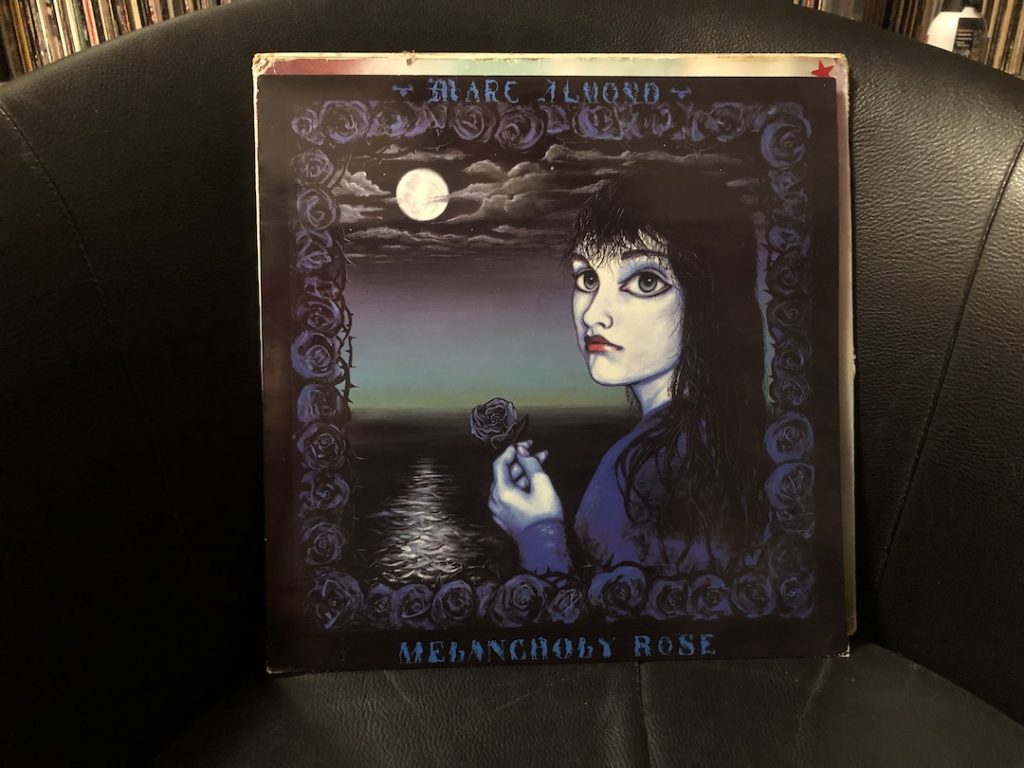
At Sunday’s Lovers Market at Homage Brewing in Chinatown, I stopped by the one record vendor who I try to always visit. I don’t think I’ve ever walked away from this booth empty-handed because there’s usually at least one crate loaded with legit cool ‘80s club 12” singles, a mix of everything from post-punk to Italo disco to hiNRG that’s geared towards DJs rather than collectors. While I was digging, I came across a Marc Almond single that I instantly wanted to buy.
I think I’m fairly typical for a certain subset of Angelenos, the kind who grew up listening to KROQ when L.A. radio actually sounded like it was made by and for people in L.A. Because of that, I knew that Soft Cell was no one-hit-wonder. “Tainted Love” may have been the big chart hit, but “Sex Dwarf” was the banger out here for many, many years. (It’s still a multi-generational banger if you’re playing a darkwave or indie night in L.A.) Plus, there’s “It’s a Mugs Game,” which is too long to be club hit now, but it was a KROQ staple for ages as well.
In the ‘90s, Soft Cell was one of those bands that would get name-dropped in goth teen circles. I guess they weren’t really *our* generation’s music, but if you scanned the spines in our CD collections, you would probably spot at least a Best Of, likely a copy of Non-Stop Erotic Cabaret and, maybe, Non-Stop Ecstatic Dancing. After we started going to L.A.’s goth clubs though, we were opened up to a whole world of Marc Almond that we didn’t know from the radio or our three CDs. That’s around the time I started digging for vinyl and, somewhere between the second half of the 1990s and first half of the ‘00s, I amassed a healthy little Soft Cell-and-related collection. It’s not complete, but it was good enough. Or, was it?
Often, when I’m digging, I have to spend a few minutes wondering whether or not I already own a record before I buy it. With this one, I knew instantly that it wasn’t in my stacks. The cover art— a black and blue scene with a forlorn, pale woman holding a single blue rose— was too memorable. If I had “Melancholy Rose,” I would know it.
“Melancholy Rose” is one of the singles from Almond’s 1987 album Mother Fist and Her Five Daughters, the last of the albums he did with The Willing Sinners as his backing band. This group of musicians who collaborated with Almond in the early years of his solo career included Annie Hogan, who would go on to work with Almond through The Stars We Are, and Martin McCarrick, who joined Siouxsie an the Banshees in 1987 and played with them until they split nearly a decade later. On backup vocals for all three B-sides is Sally Timms of The Mekons. Almond co-produced this collection of songs with Mike Hedges, whose own list of credits is long and filled with British indie favorites like The Cure Faith, Siouxsie and the Banshees Hyaena, The La’s S/T, Lush Split and on and on. He also produced Almond’s two previous solo albums, Vermin in Ermine and Stories of Johnny, which are great. All this is to say in a tl;dr way that, just based on the credits, this is a good score for anyone who is into goth, British indie, etc.
Marc Almond is one of my favorite lyricists. He writes narrative-driven songs and, often, the stories he tells are dark af. (Exhibit A: “Sex Dwarf”) In that respect, “Melancholy Rose” is a peak Marc Almond story. It begins: “First I saw you/Love in a silk black slip/In dark waters/Sinking like a ship/Trouble on your lips/Murder in your song.” So descriptive! So ominous! You know it’s not going to end well and yet you will continue to listen. The music, though, is disarmingly upbeat and the “oh oh oh ohs” ever-so-slightly hark back to the Northern Soul influence in Soft Cell’s catalog. Plus, the accordion, gives the song a sea shanty feel, while also reminding me of The The’s song “This Is the Day.”
The single’s three B-sides are all non-album tracks. “Gyp the Blood,” which was the name of a notorious early 20th century mobster, was co-written with Hogan, who also co-wrote several songs on the album. Both this song and “A World Full of People” have a dramatic, chanson vibe. It sounds like Almond is getting ready to drop a whole album of Jacques Brel covers, which he does two years later. “A World Full of People” is also an incredible song to play when you’re fed up with everyone. He sings, “Why is the world filled with people? It makes for a painful life.” I swear I feel like this every day after more than five minutes on Instagram and I bet you do too.
“Black Lullaby,” though, is the standout on the whole record. It’s a lovely, end-of-the-night song with a light Celtic motif running through the first half of the song, melancholy horns bringing it to a close and stunning backup vocals from Sally Timms that add to the drama. This is probably going to end up in my bar DJ sets soon.
Liz O. is an L.A.-based writer and DJ. Read her recently published work and check out her upcoming gigs or listen to the latest Beatique Mix. Follow on Instagram for more updates.
Keep reading:
Valley Girl Is the Best ’80s Teen Movie
Whammy! Analog Media Celebrates Third Anniversary with Day of Live Music
In Sheep’s Clothing x Japonesia Is the One Record Fair I Try Not to Miss
